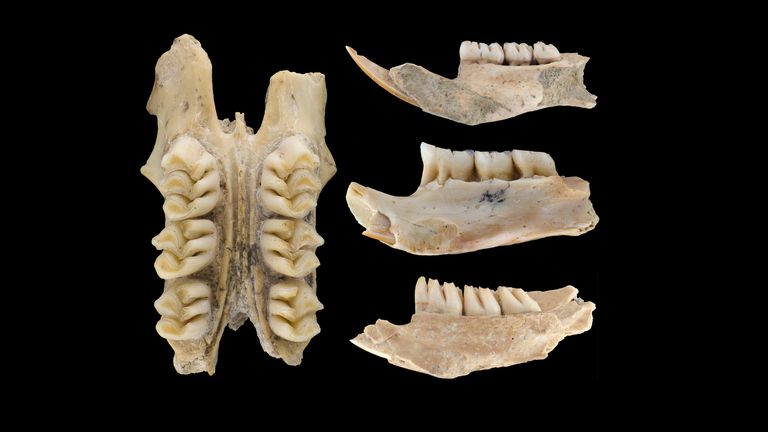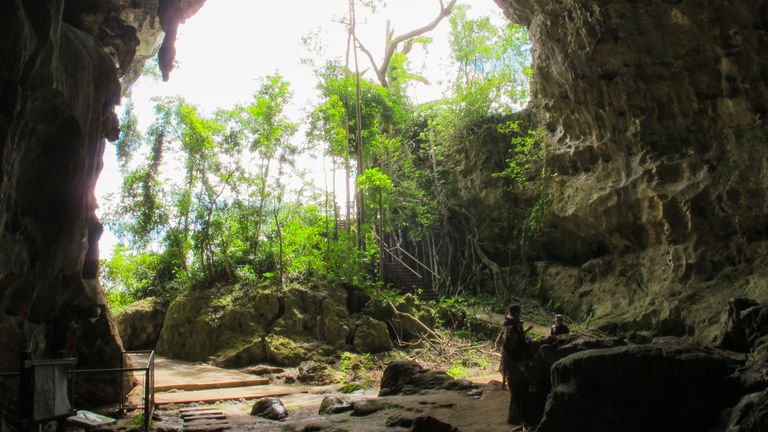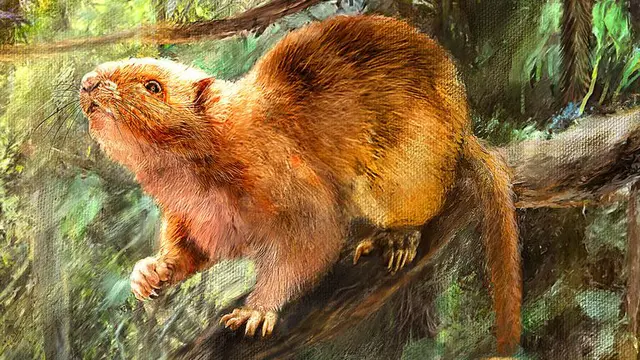"Cute" fluffy, bushy tailed rats twice the size of grey squirrels once roamed Earth thousands of years ago, scientists have discovered.
The fossilised remains of this giant cloud rat species were dredged up in a series of caves in the Philippines, after the rodent went extinct a few thousand years ago.
Larry Heaney, curator of mammals at the Field Museum in Chicago, said: "The bigger ones would have looked almost like a woodchuck [groundhog] with a squirrel tail.
"Cloud rats eat plants, and they've got great big pot bellies that allow them to ferment the plants that they eat, kind of like cows.
"They have big fluffy or furry tails. They're really quite cute."
The curator added: "Their abrupt disappearance just a few thousand years ago leaves us to wonder if they were big enough that it might have been worthwhile to hunt and eat them."

Image:The bigger of the species would have 'looked almost like a woodchuck'
Modern day rodents known as cloudrunners are nocturnal rats native to the Philippines, living in the treetops of mountain forests and fulfilling and ecological role in their habitat that squirrels do in other countries, according to experts.
The Callao Caves, located in Penablanca, where the fossils were discovered, was also the home of homo luzonensis, an ancient human species that lived nearly 70,000 years ago.
Some fossilised remnants of the cloud rat species were unearthed in the same layer that the homo luzonensis was found, making the rodents around 70,000 years old.
**Subscribe to the Daily podcast on **
Apple Podcasts
**, Google Podcasts
, Spotify
**, **Spreaker
**
Other remains were found to be around 2,000 years old, which is the same as when the giant rats disappeared.
According to researchers, this information means that these ancient rats "were resilient and persistent for at least 60,000 years."
Philip Piper, from the Australian Nation University, said: "Our records demonstrate that these giant rodents were able to survive the profound climatic changes from the ice age to current humid tropics that have impacted the earth over tens of millennia.
"The question is what might have caused their final extinction?"

Image:The Callao Caves, located in Penablanca, where the fossils were discovered
One potential explanation for the giant rodents sudden disappearance could be due to humans, researchers believe, as the cloud rats' abrupt disappearance coincides with the discovery of pottery and Neolithic stone tools.
Another possibility is their extinction occurring at the same time "when dogs, domestic pigs, and probably monkeys were introduced to the Philippines".
A professor in the archaeological studies program at the University of the Philippines, Armand Mijares, said: "While we can't say for certain based on our current information, this implies that humans likely played some role in their extinction."
The research is published in the Journal of Mammalogy.
 简体中文
简体中文

